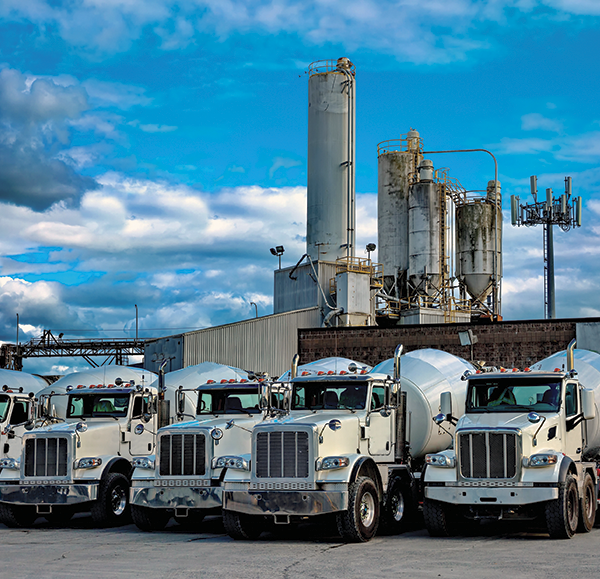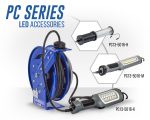How do fleet managers measure operational needs? Several approaches help quantify necessary functional requirements while filtering out end-user operator demands often communicated as needs. In the end, fleet managers are responsible for maintaining order between operational realities and requirements of the work that needs to be accomplished. Fleet departments are often viewed as red marks in organization budgets. Without understanding the importance and unsung accomplishments of fleet operations, it is easy to see them as expenses and operational necessities rather than assets that can increase productivity and lower the bottom line. Yet fleet managers can act as champions for their organizations and potentially turn a perceived expenditure into a tangible resource.
SENSE FROM DOLLARS
Every successful company needs a sound business plan. Controlling costs and saving a few cents on every dollar spent can compound in the long run. Regulating expenditures within your control contributes to the success and solvency of an organization. This journey normally begins with leadership directing fleet managers to reduce overall operating expenses. Creating a business plan becomes a necessity. Taking the time to analyze fleet operating costs and address problems rather than cure symptoms can pave the way to long-term success.
Some fleet managers fail to effectively execute long-range goals. This often occurs when management expects instant cost reductions, which fleet managers accomplish by:
- Eliminating surplus vehicles
and equipment - Extending service intervals
- Deferring maintenance
- Reducing parts inventory
Although these items may need to be addressed, they are short-term solutions and can increase overall operating expenses down the road. At some point, lengthening service intervals and postponing maintenance may result in costs that are greater than savings. Downtime is frequently overlooked as an expense that takes a toll on operational efficiency. Stocking enough inventory for maintenance and repairs as well as optimizing the amount of second-line equipment often brings greater financial savings in the long run.
A CLOSER LOOK
In the vocational fleet world, inventory can be an asset or liability, and having the right type for your vehicles is critical to cost control. Fleet managers should periodically take a global view of their operations to assess inventory, prioritize needs, and take action to reduce costs.
In the late 1890s, Italian economist Vilfredo Parerto suggested the principle of factor sparsity, or the 80/20 rule, which means 80% of effect comes from 20% of cause. This paved the way for ABC analysis. Although this principle is more commonly used in materials management, exercising the process behind it can give fleet managers cost control insights.
ABC analysis is a way of categorizing inventory based on quantity and amount of resources consumed. Although there are no defined thresholds for each class, different proportions are weighted based on where they fit within the organization’s overall inventory.
- A items account for a small amount of inventory but are high in value and resource consumption
- B items represent a moderate amount of inventory and moderate consumption of resources
- C items account for a large amount of inventory and small consumption of resources
To put this numerically, A equipment may only represent 20% of the fleet; however, it could account for 60% of operating costs. B equipment would represent 30% of the fleet and 25% of operating costs, and C equipment would account for 50% of the fleet and 10% of operating costs.
Understanding the importance and use of these assets is key to overall cost control efforts. Your A items normally account for specialty equipment, designed to accomplish specific tasks. However, this equipment often carries the highest acquisition and maintenance costs.
DETERMINING OUTCOME
As technology advances, fleet managers can no longer rely on what they have always purchased to continue their operational efficiencies. Conducting front-end research and following a systematic approach will help lessen the burden of determining operational requirements of work vehicles.
Begin by defining what the work truck needs to do. The following questions should be answered before designing a new vehicle:
- What is the primary purpose of the truck?
- What are the towing payload requirements?
- What is the unit’s operating environment?
After addressing these basic functional questions, look at performance requirements and technical solutions for increasing efficiency. What is the desired maximum speed at full capacity? Have you accounted for special equipment—dimensionally and operationally?
Consider the operating conditions and environment. Will this equipment be used in urban or rural conditions? What is the anticipated topology (e.g., is terrain mostly hilly or level)? Take environmental factors into account. Will the vehicle operate in snowy and salty conditions?
Adjusting your truck design to these metrics can decrease costs through risk mitigation, reduced maintenance, and extended truck life. For example, consider upgrading transmission and engine cooling systems for vehicles operating in high-temperature regions. Relocate air tanks or use remote drain systems in humid climates. Use heated mirrors, windows, and upgraded air dryers in extreme cold regions.
Review maintenance histories of your existing fleet. Looking at failure points can help identify where adjustments are needed. Either changing the specification or matching the proper type of equipment for the defined job will ensure optimal efficiency.
LEVERAGING DATA
Using accurate data to drive design changes can improve performance and assist in reducing operating expenses. Taking a few steps to capture specific data can help fleet managers increase operational output and productivity. For most businesses and organizations, resources are limited. Collecting specific information on units that consume the highest amount of resources (i.e., fuel, maintenance, acquisition cost) will likely provide data that can be turned into savings by analyzing and adapting operations.
ABOUT THE AUTHOR
Christopher Lyon serves as NTEA’s director of fleet relations. This article was first published by NTEA on February 21, 2017. Find out more, visit www.ntea.com/fleetresources.




